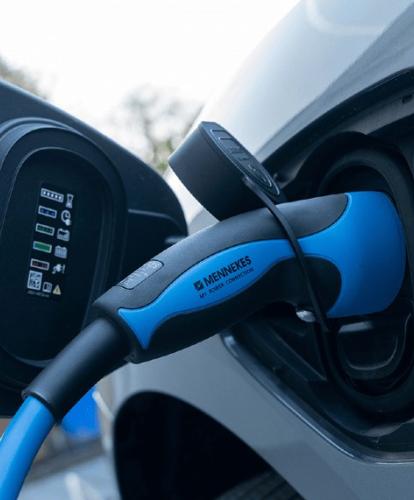The International Energy Agency (IEA) has presented a step-by-step plan on how, by 2050, the world could achieve net CO2 neutrality. According to the IEA, the climate protection pledges made by governments to date fall well short of what is required for this to happen, even if they achieve them fully.
In the transport sector, according to the plan from the IEA, no new cars with combustion engines may be sold worldwide from 2035 onwards, and at least 50% of heavy-duty trucks sold would have to be electrically powered. As early as 2030, the share of electric cars sold worldwide would have to reach 60%.
The IEA has not chosen the dates 2030 and 2035 at random. To achieve net CO2 neutrality by 2050, the IEA has grouped over 400 measures in five-year intervals for its phased plan.
In the passenger car sector at least, the IEA targets roughly coincide with manufacturers’ plans, and implementation seems feasible in this respect. VW plans to have a 70% share of electric vehicles by 2030 and would exceed the IEA target – provided VW can meet its own targets. BMW, on the other hand, is planning on 50% electric cars in 2030.
In the UK, the share of new plug-in cars sold in 2021 so far stands at 13.6%. Overall, there are now over 500,000 plug-in vehicles on UK roads. Indeed, 2021 continues to be a strong year for sales of plug-in vehicles in the UK, with 131% growth in 2021 year-to-date compared with the same period in 2020.
Fatih Birol, IEA Executive Director, said:
“Our Roadmap shows the priority actions that are needed today to ensure the opportunity of net-zero emissions by 2050 — narrow but still achievable — is not lost.”
Other targets of the IEA plan, such as energy generation, concern electromobility indirectly. According to the plan, no new coal-fired power plants are permitted with immediate effect – worldwide – and investments in fossil fuel supply projects, such as coal mines or new oil and gas production sites, are also to be stopped.
By 2030, an additional 1020 gigawatts of wind and solar energy will be made available per year. This would entail the construction of new plants. In 2035, four gigatonnes of CO2 would be sequestered according to the plan, but the IEA did not specify the procedure for this. In 2040, half of the fuel used in aviation is to be low-emission. In 2045, according to the step-by-step plan, 435 megatonnes of hydrogen should be available – but not for passenger cars. By 2050, CO2 emissions from the energy sector should be almost zero – and thus, the consumption of energy should be significantly cleaner.
Critics consider the plan now presented remarkable, given the International Energy Agency has traditionally been considered fossil-friendly. As recently as this millennium, the IEA had called for an increase in oil production. The agency is now planning to phase out coal-fired power plants and stop developing new oil production sites.



